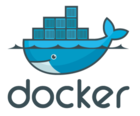CoreOS is a lightweight Linux operating system designed for clustered deployments providing automation, security, and scalability for your most critical applications. I’ve been playing with CoreOS to replace Debian hosts which run Docker containers on Nousmotards project. CoreOS helps on simplifying bare metal deployment and avoid managing OS upgrade.
As I’m still an Ansible lover, I’ve made 2 roles:
CoreOS Ansible: Ansible role to deploy pypy to CoreOS to be able to get Ansible prerequisites CoreOS: Ansible CoreOS role to deploy CoreOS on bare metal servers If you want to quickly look at the result:




